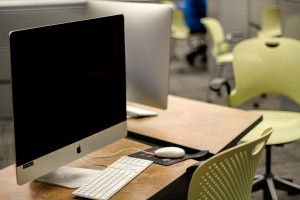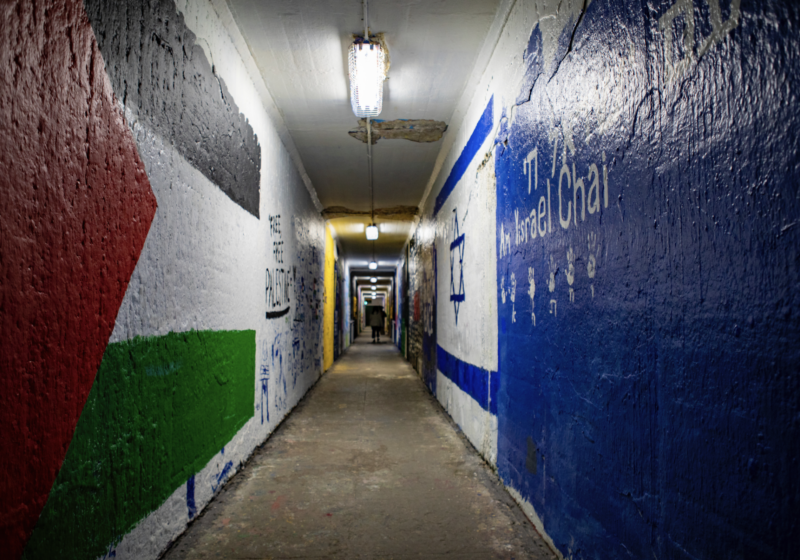At any given moment, you can walk into Room 201 of Rettner Hall and find students studying for class. The couches on the second and third floors are perpetually occupied by students hanging out with their computers and eating something from The Pit.
But not many students know about all the resources available to them in Rettner Hall. Deemed as a “hub for the arts, sciences, and engineering” on the University website, the building includes many resources for students to immerse themselves in digital technology.
It was created with the hope that students of all different majors could come together and work with different sets of tools. It is
named after Ronald Rettner, University Trustee since 2012 and philanthropist that provided the lead gift for the Hall.
Rettner accommodates the University’s two new majors – Digital Media Studies (DMS) and Audio and Music Engineering (AME).
DMS combines all the aspects of digital work into one handy major, and trains students to be able to handle digital media at any stage.
AME majors will learn every single step of working in the music industry, and will acquire many different skills, such as making a music CD or fixing an amp.
The building includes a multipurpose learning studio and group study areas. It has resources for creation, such as an engineering fabrication lab that any student can use to build projects, sound and video recording studios, high-end computers, and three 3D printers.
There is also a large space on the first floor in which projects can be worked on or displayed.
Although much of the student population has known about the new access to the 3D printers, many have not been aware of the other technology that is now accessible to the University community.
The building was constructed very quickly and offically debuted over Meliora Weekend. Though it was opened 6 months ago, many of the other labs in the building are just starting to get on their feet.
At first, only the second floor computer area was opened for official use because the facilities needed to undergo rigorous testing in order to be safe and effective to use.
The shop space “required several modifications on its facilities in order to meet tool requirements and conform to safety requirements,” Professor of Optics James M. Zavislan commented. “A majority of these were completed last week, and we are now able to run all of the tools in the shop.”
In addition, the space was tested to ensure that the noise from the tool shop would not interfere with the use of the surrounding recording studios.
“We validated that the design and construction features of Rettner Hall,” Zavislan said. “Namely, floating and acoustically decoupled floors, masonry and acoustically decoupled walls prevented any noise from the shop tools from entering the recording studio.”
The UR Makers Club is an student organization that brings together individuals that are interested in constructing machines for various purposes. With the tools commissioned, they will be able to fabricate a “Makers Space” in the first-floor workshop area.
This program is to be launched in fall 2014.
EAS 141, “Basic Mechanical Fabrication,” will be held in Rettner Hall this fall. More sections will be held than originally placed in Taylor Hall. This course’s primary purpose is to get students acquainted with machine shop tools through creating a project of their own choosing.
Currently, Rettner Hall has three 3-D printers that students can use to make machine parts and prototypes. Students simply need to send in the design that they want made and it will be added to the queue.
“While the shop facilities were […] finished this semester, we were able to commission the fourth Rettner Hall 3D printer, a Stratasys Objet 30 Pro” Zavislan said. “This printer produces exceptional resolution and strong parts.” Some are worried that these printers are actively being put to use by multiple classes. For example, a Mechanical Engineering student group led by
Professor of Mechanical Engineering Stephen J. Burns is working with the Objet printer to study the printing of optical surfaces.
The 3D printers are being managed by a group of undergraduate students. Students can meet with this group to discuss which printer to use and how exactly to go about building it.
CSC 131, “Recreational Graphics,” a course that will be offered this summer, will give students a jumpstart on 3D modeling, graphics and printing.
“It will teach the use of the open source ‘Blender’ modeling package for 3-D modeling, visualization, ray trace graphics, simulation and computer animation,” the course description reads.
“We remain committed to provide University of Rochester students with creative and fabrication facilities for their curricular and extracurricular work,” Professor Zavislan noted.
Any student can use the resources provided, and once the building and testing is finished, anyone will be able to walk in on any day to get a project done.
Many students and faculty are eager to see Rettner in full operation and look forward to using it to its fullest extent.
Kanakam is a member of the class of 2017.





